By Robert Tate, Automotive Historian and Researcher
Images Courtesy of the Hudson Motor Car Company, Classic Cars, Shorpy
Published 12.7.2022
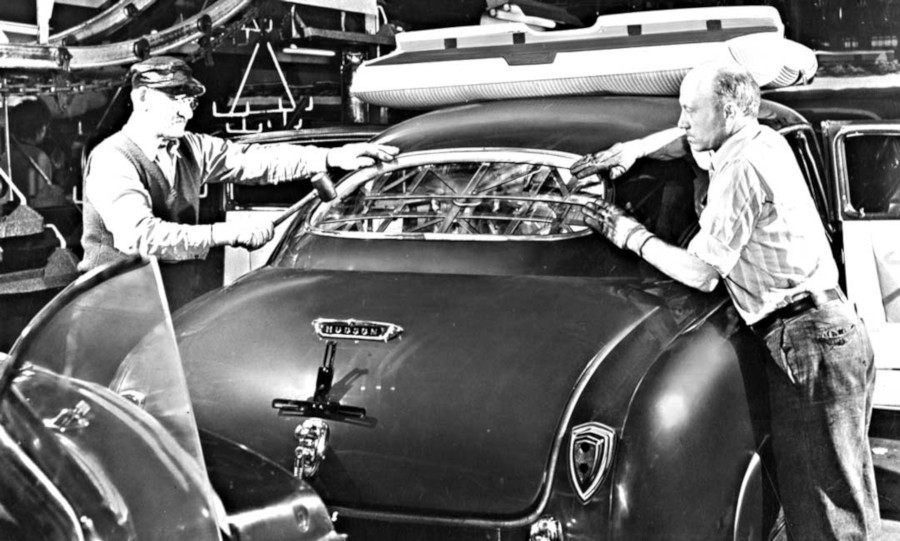 1948 Hudson models being assembled
1948 Hudson models being assembled
I remember having lunch many years ago with my good friend the late Don Butler about his contributions to the auto industry. Butler was the author of the following books: “The History of Hudson,” “The History of Auburn/Cord/Duesenberg” and “The Plymouth and DeSoto Story.” In particular, I recall his passion for and contributions to the design of the 1948 Hudson automobiles. Butler was a great auto historian, writer and creative designer whose contributions are now part of our automotive heritage.
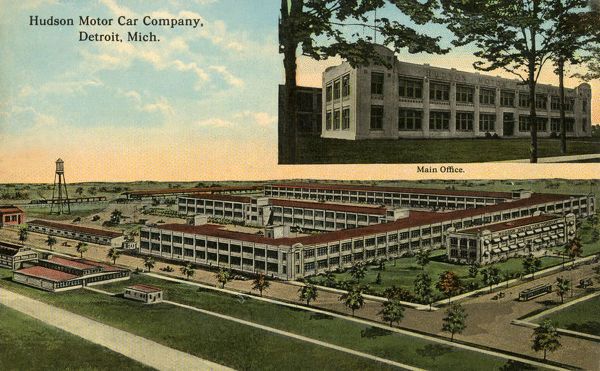 An early postcard image of the Hudson factory
An early postcard image of the Hudson factory
The 1948 Hudson automobile design was all new with its step-down styling features. Production of the 1948 models began on October 12, 1947, and a total of 117,200 units were manufactured that model year. The Hudson Motor Car Company’s manufacturing operations were located near Gratiot Avenue in Detroit. Later, 200,000 square feet of floor space was added to the property which fronted on Harper Avenue and was called the Harper plant.
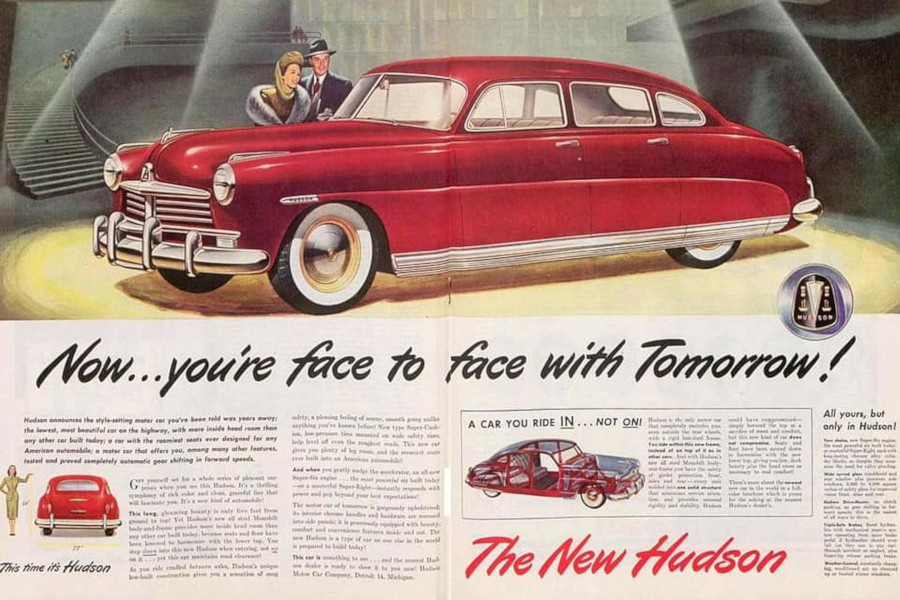 1948 Hudson ad (Robert Tate Collection)
1948 Hudson ad (Robert Tate Collection)
The 1948 Hudson unit construction used a box-section frame designed into the body and encircling the rear wheels. This design provided protection around the driver and passengers with a recessed floor and a lower roofline, which also allowed for more interior headroom. Other new developments included great-looking wrap-around bumpers. The windshield offered a divided and curved design.
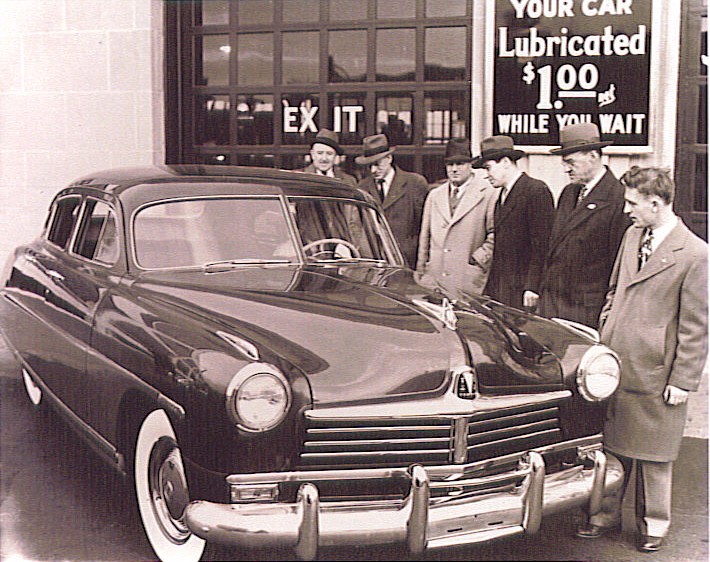 A 1948 Hudson at a dealership in Boston MA
A 1948 Hudson at a dealership in Boston MA
The step-down unit-body Hudson models for 1948 and 1949 were identical except for serial numbers. The automotive term “step-down” referred to the dropped floor plan, which was completely surrounded by frame gilders. This design became a great selling tool in the post-war automotive market. In the fall of 1947, Hudson dealers were excited because they needed this model to greatly improve sales and move their company forward.
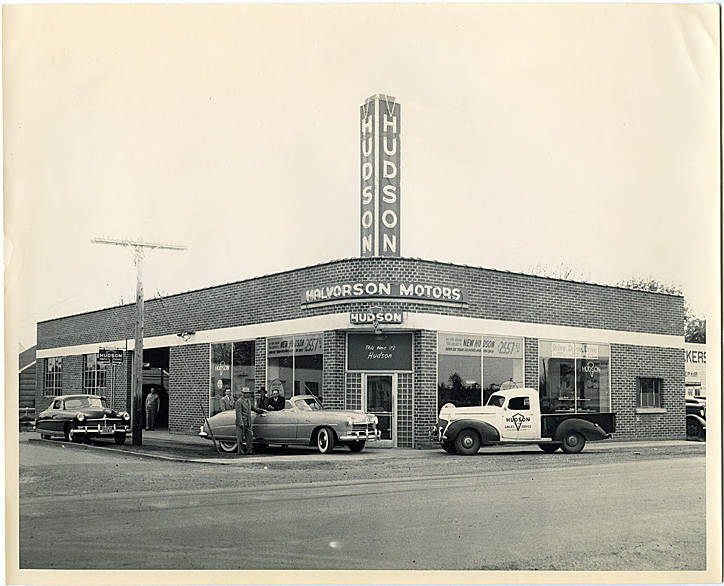 A Hudson dealership, circa 1948
A Hudson dealership, circa 1948
In 1948, Hudson offered three body styles which included a very popular convertible model. The convertible was priced at $3,138 and offered a foldaway rear window. All six-cylinder Hudson’s were powered by the new “Super-Six” engine with an optional 8-cylinder also available.
The popular advertising slogan for Hudson for the 1948 models was “Now You’re Face to Face with Tomorrow,” used to promote nationwide showings of the cars starting December 7, 1947. The slogan received instant acclaim from U.S. consumers.
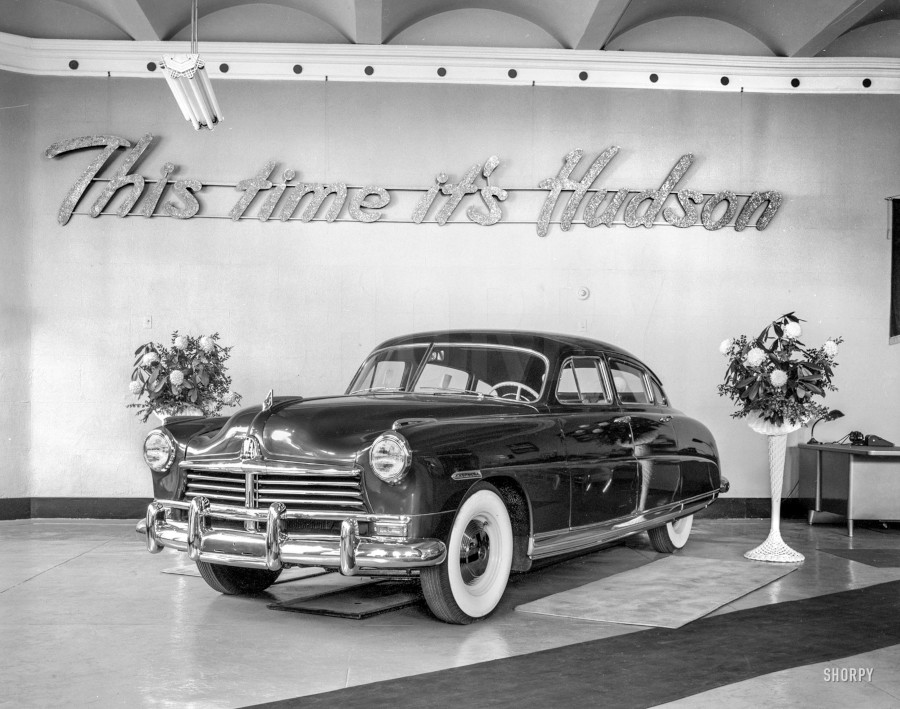 1948 Hudson on display (Shorpy)
1948 Hudson on display (Shorpy)
The 1948 Hudson design was carried through the 1954 model year, when many consumers were beginning to complain about the styling looking older and outdated. Roy D. Chapin Jr, who was a Hudson sales executive in the early years, had said: “If you don’t have enough money to do something and do it right, and if you haven’t learned to specialize in a given thing, sooner or later you find you just can’t do everything.” The Hudson Motor Car Company lacked the financial base to add new and exciting body styles to the 1948 Hudson lineup. For too many years, each new Hudson model would look too much like the previous year’s offerings.
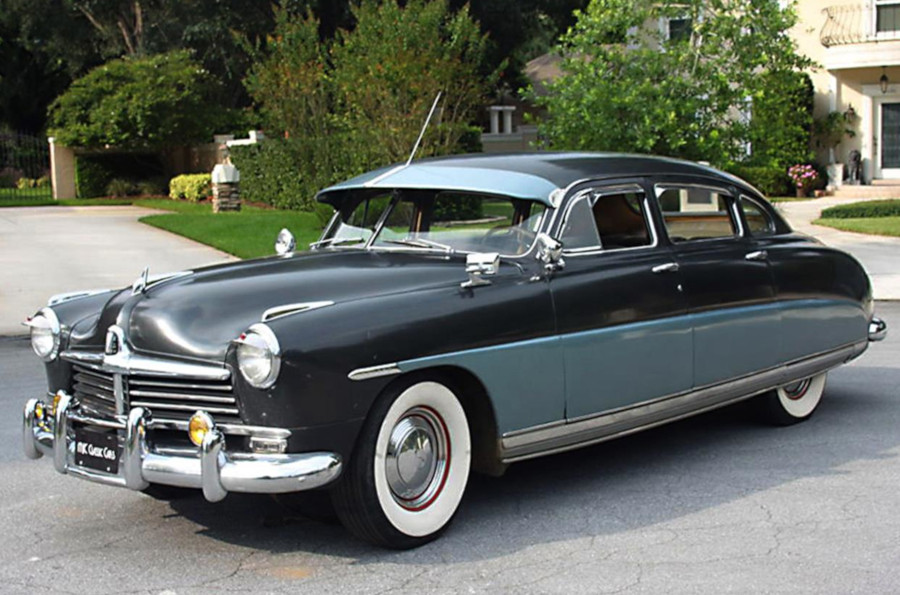 A 1948 Hudson Commodore (Classic Cars Auction)
A 1948 Hudson Commodore (Classic Cars Auction)
In conclusion, the 1948 Hudson models were truly significant new designs of the early postwar years. The “Step-Down” Hudson was low and sleek, which many consumers really enjoyed. They offered armchair-comfortable seats with a great-looking roomy interior.
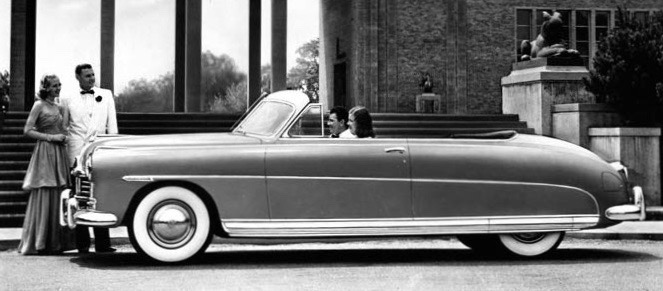 The 1948 Hudson convertible
The 1948 Hudson convertible
The 1948 Hudsons offered great-looking designs that brought the company huge profits. Unfortunately, Hudson could not keep up with the competition from the other automakers, whose designs were changing all the time when consumers wanted more high tail fins and chrome, which Hudson unfortunately did not offer.
Bibliography
Butler, Don. “The History of Hudson.” Crestline Publishing, 1982.
Langworth, Richard M. “The Postwar Years Hudson.” Motorbooks International, 1977.
Langworth, Richard M. “Encyclopedia of American Cars 1930-1980.” By the auto editors of Consumer Guide, 1984.



